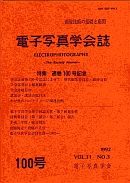Volume 30, Issue 3
Displaying 1-9 of 9 articles from this issue
- |<
- <
- 1
- >
- >|
-
1991Volume 30Issue 3 Pages 266-273
Published: 1991
Released on J-STAGE: March 14, 2008
Download PDF (956K) -
1991Volume 30Issue 3 Pages 274-281
Published: 1991
Released on J-STAGE: March 14, 2008
Download PDF (2413K) -
1991Volume 30Issue 3 Pages 282-292
Published: 1991
Released on J-STAGE: March 14, 2008
Download PDF (2475K) -
1991Volume 30Issue 3 Pages 293-301
Published: 1991
Released on J-STAGE: March 14, 2008
Download PDF (865K) -
1991Volume 30Issue 3 Pages 302-305
Published: 1991
Released on J-STAGE: March 14, 2008
Download PDF (369K) -
1991Volume 30Issue 3 Pages 307-311
Published: 1991
Released on J-STAGE: March 14, 2008
Download PDF (665K) -
1991Volume 30Issue 3 Pages 312-317
Published: 1991
Released on J-STAGE: March 14, 2008
Download PDF (1434K) -
1991Volume 30Issue 3 Pages 318-322
Published: 1991
Released on J-STAGE: March 14, 2008
Download PDF (989K) -
1991Volume 30Issue 3 Pages 323-326
Published: 1991
Released on J-STAGE: March 14, 2008
Download PDF (1422K)
- |<
- <
- 1
- >
- >|
